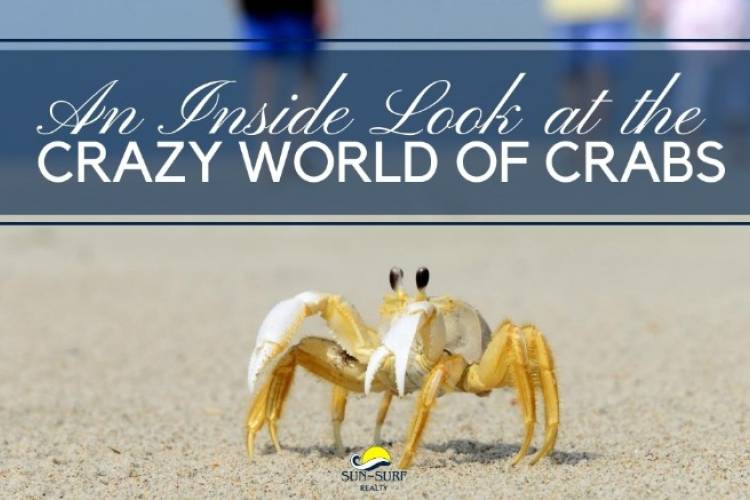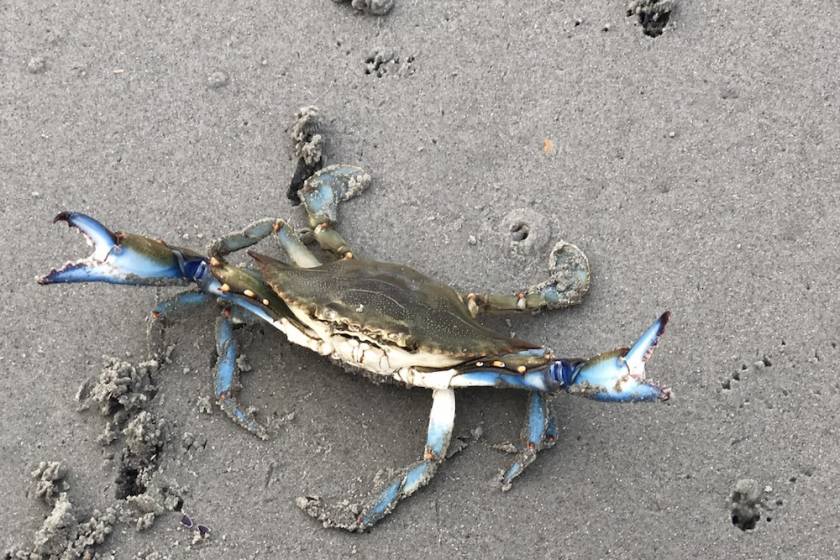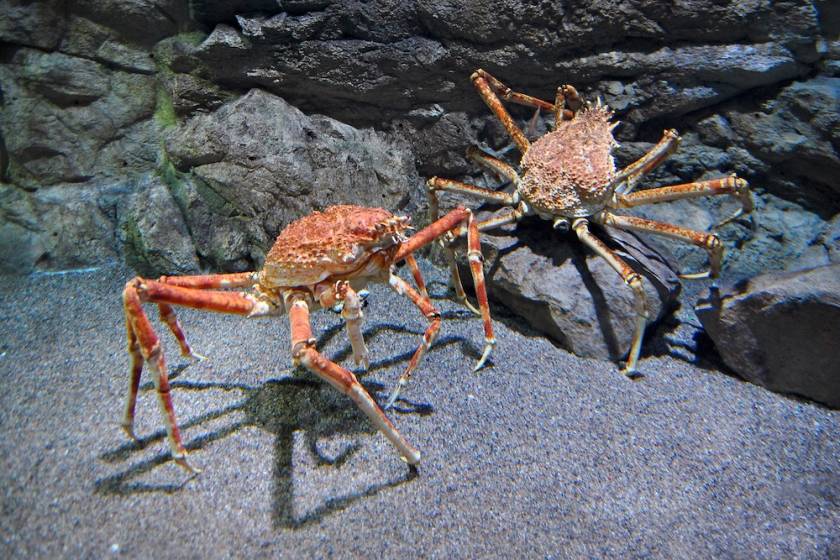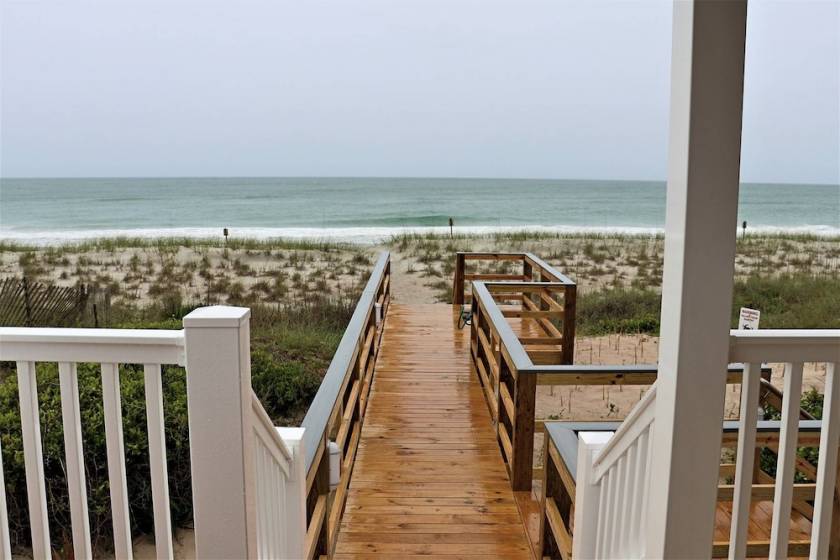Crabs of North Carolina

Welcome to the wild and wonderful world of Emerald Isle crabs! These quick and curious creatures can be found in the sounds, marshes, creeks, beaches, and Atlantic waters surrounding Emerald Isle and the Crystal Coast of North Carolina. They’re cute, fast, and an important part of the island’s ecosystem.
A wide variety of crabs means a healthy coastal environment, so the more you see, the better.
You’ve probably already met the blue crab, especially if you’ve enjoyed local seafood during your stay. Blue crabs are North Carolina’s most economically important seafood species, supporting the commercial fishing industry and serving as a local favorite in coastal restaurants.
Next time you leave your Emerald Isle vacation rental, take a closer look around. You might spot a few of these fascinating crustaceans scurrying by.
The Science and Classification of Crabs
Who’s ready for a quick review of taxonomy? This will help you better understand the differences among the species of crabs you’ll see here in Emerald Isle. We promise we’ll make it quick and painless, and best of all you can school your kids on a few things!
Here’s a quick and painless crash course in crab classification so you can impress your family on your next beach walk:
- Anomura: Includes hermit crabs, porcelain crabs, and mole crabs, which aren’t true crabs.
- Brachyura: The true crabs, like the famous blue crab, have broad shells and tucked-under tails.
- All crabs belong to the order Decapoda, meaning “ten legs,” which also includes lobsters, shrimp, and crayfish.
- Horseshoe crabs aren’t actually crabs. They’re ancient relatives of spiders and belong to a completely different class called Merostomata.
Now that you know the basics, let’s meet some of the most common crab species in Emerald Isle, NC.
Types of Crab Species You Might See in Emerald Isle, NC
Crabs are some of the cutest crustaceans around, and there are so many kinds. Here are a few of the many types of crabs you might encounter during your Emerald Isle beach vacation. More than 50 species of crabs have been documented at Fort Macon State Park, and they represent species that you would typically expect to find along our entire coast.
Blue Crabs & Other Swimming Crabs

Most crabs use their legs for walking, however one family of crabs is adapted for swimming. The fifth pairs of legs on speckled, lady and blue crabs are flattened and used like paddles. Along with their thin, streamlined shell they are able to propel quickly through the water in search of prey. Other species of swimming crabs are the iridescent, flat-surface, and plain lady.
Blue Crab Recap:
- Use their flattened back legs like paddles to swim instead of walk.
- Streamlined shells help them move quickly through the water.
- Relatives include speckled, lady, iridescent, flat-surface, and plain lady crabs.
- Often spotted near inlets, docks, and shallow estuaries.
Calico Crabs (aka Leopard Crabs)
One of our most colorful crabs is the calico crab, also referred to as the leopard crab due to large red spots on the pale yellow shell. These crabs are scavengers that feed on the bits and pieces of decaying plants and animals. It also is called a leopard crab, depending on who you ask. Whatever you decide to call it, it is quite a stunning pattern to behold.
Calico/Leopard Crab Recap:
- Known for beautiful red spots on a pale yellow shell.
- Feed on decaying plants and animals, playing a key role as scavengers.
- Sometimes called leopard crabs, depending on who you ask.
- A colorful highlight of the Crystal Coast shoreline.
Fiddler Crabs
Along the edges of the marshes, it is easy to find the semi-terrestrial fiddler crab. Sand, mud and brackish water fiddler crabs can be found in their same-named habitats. The male of these species is known for its large fiddle-shaped claw that it waves about to attract females or threaten other males. And yes, that claw can draw blood—so mind your fingers!
Fiddler Crab Recap:
- Found along marsh edges in sand, mud, and brackish water.
- Males have one large “fiddle-shaped” claw used to attract mates or fend off rivals.
- Despite their size, that claw can pinch, so it’s best to admire from a distance.
Ghost Crabs
Ghost crabs are on average about 2″ wide across, feature long legs, and eyes that are perched on stalks and can rotate a full 360 degrees. Their name derives from their pale, sandy color, which makes them almost invisible against the shoreline until they start moving. To see them for yourself—head to the oceanfront after the sunset, turn on the flashlight, and watch the local ghost crab population scatter!
Ghost Crab Recap:
- Around 2 inches wide with long legs and rotating eyestalks that spin 360 degrees.
- Their pale, sandy color helps them blend into the beach during the day.
- For the best view, visit the shoreline after dark with a flashlight and watch them scatter across the sand.
Hermit Crabs
Hermit crabs live in the cavity of gastropod mollusk shells. Even though they are crustaceans, they are not true crabs because they are soft-bodied and don’t possess a protective shell. That’s why they take up residence inside the protective armor of a seashell. There are at least six species off the local waters. Most common is the striped, but there are dwarf, banded, flat-clawed, clam shell and giant red hermit crabs.
Hermit Crab Recap:
- Not “true” crabs. They have soft bodies and borrow empty seashells for protection.
- At least six species live in local waters, including striped, banded, and giant red hermit crabs.
- A favorite find for beachcombers and kids alike.
Lady Crabs
The lady crab is a brightly colored, aggressive, swimming crab. In the water and under direct sunlight, this crab’s coloring appears iridescent. It’s name comes from the beautiful color patterns on the shell, although there are male lady crabs as well as females. The sharp, powerful pincers are whitish in color with purple-spotted tips and jagged teeth. The last pair of legs are modified into paddles for swimming.
Lady Crab Recap:
- Brightly colored and active swimmers with iridescent shells.
- Pincers are white with purple-spotted tips and serrated edges.
- Both male and female lady crabs exist; the name refers to their elegant coloring.
Spider Crabs

Spider crabs, known for their long spider-like legs, are masters at camouflaging themselves among the oyster shells. These crabs will decorate themselves with algae to blend in with their surroundings. Some will even attach live sea anemones on their shells to ward off predators with their stinging tentacles. They are a formidable opponent for sure.
Spider Crab Recap:
- Have long, spindly legs and are experts at camouflage.
- Decorate their shells with algae or sea anemones for protection.
- Commonly found hiding among oyster shells and rocky habitats.
Stone Crabs
The biggest and intimidating-looking crab in our area is the stone crab. Their shell can get up to seven inches wide and is protected with boxing-glove-like claws. The claw has one movable finger and an immovable palm that can crush and cut into oysters and other mollusks. Like all crabs they molt as they grow. After molting their shell is soft, making them vulnerable to predators. To avoid detection while molting, they usually shed their old shell under the darkness of night.
Stone Crab Recap:
- The largest and most intimidating crab on the North Carolina coast.
- Can grow up to seven inches wide, with powerful, crushing claws.
- Molt at night to avoid predators while their new shell hardens.
- A true heavyweight of the crab world.
Book Your Trip to Emerald Isle Directly with Sun-Surf Realty!

Whether it’s a ghost crab darting across the beach at night or a blue crab swimming through the shallows, these creatures are everywhere along the Crystal Coast. Each one plays a part in keeping the Emerald Isle ecosystem healthy, so the next time you’re walking the beach, take a moment to appreciate your crabby neighbors. One of the best places to spy some North Carolina crabs is your oceanfront rental!
Choose from the best accommodations around when you search Sun-Surf Realty's extensive catalog of vacation rentals. Ready to take the leap? Browse our available rentals now and book your trip to Emerald Isle directly with Sun-Surf Realty!
*Sources: ncwildlife.org coastalreview.org edc.uri.edu outerbanks.com